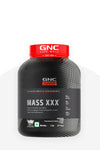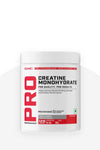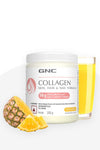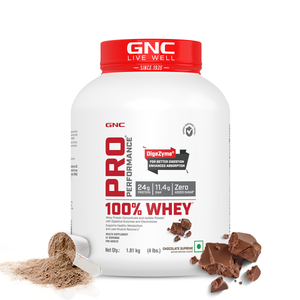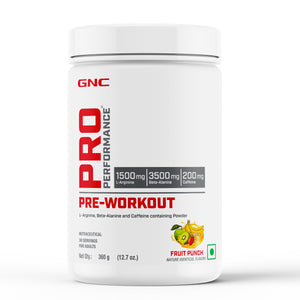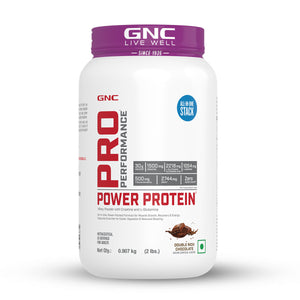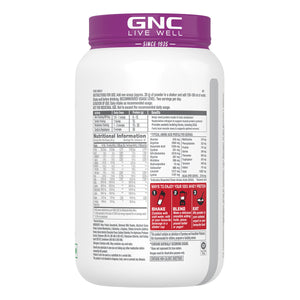
The fat intake of Indians is skewed due to many factors like different cuisines followed, likings, fast foods etc. The recommended dietary allowances for fat and fatty acids are set to help prevent lifestyle diseases. Fats have always been the villain in our lives. It has been criticized for right as well as wrong reasons.
But, fats are important and one of the major sources of energy, but the type of fat and amount of fat consumed daily always makes the difference.
There are mainly 3 types of fats:
- Saturated Fatty Acids
- Unsaturated Fatty Acids: It is further divided into Monounsaturated fatty acids and Polyunsaturated fatty acids.
- Trans Fatty Acids
Poly-unsaturated is further divided into omega-6 and omega-3 fatty acids and monounsaturated into omega-9 fatty acids.
While all fats provide the same calories i.e. 9 kcal/gm, monounsaturated and polyunsaturated fats can have a beneficial impact on your health and saturated and trans fat can have detrimental effects.
Of all the FAs, especially polyunsaturated saturated fatty acids, only linoleic acid (LA, 18:2 n-6) and alpha-linolenic acid (ALNA, 18:3 n-3) are considered essential fatty acids (EFAs) since these cannot be synthesized in the body.
Fast Facts: LA is commonly known as Omega-6 fatty acids and ALA is known as Omega-3 fatty acids.
LA and ALA are further elongated and desaturated in the body to give rise to metabolically important long-chain derivatives and two are commonly known to us as omega-3 fatty acids. they are Eicosapentaenoic acid (EPA) and Docosahexaenoic acid (DHA).
Let’s deep dive into the world of Omegas and Omega-3 Fatty Acids
WHAT ARE OMEGAS?
Omegas are long-chain fatty acids that play a vital role in maintaining the integrity of body tissues. Because the body can’t make all the types of fatty acids that it needs, some must come from food. These are called essential fatty acids. The basic building blocks for the various cells in the body are essential fatty acids or EFAs. Omega fatty acids are broken down into different categories and are found in a variety of different food sources. Each category can play different roles in the body.
-
OMEGA 6 FATTY ACIDS
Omega 6 fatty acids are essential fatty acids, which means that the body can’t make them and they must be obtained through the diet.
Fortunately, they are abundant in meat, eggs, milk, grains, and the oils that are made from them, including cooking oils like sunflower and corn oils.
These fatty acids are much more abundant in the Indian diet than the omega 3 fatty acids. GLA (gamma-linolenic acid), found in primrose and safflower oils, is an important omega 6 and serves a range of functions such as providing dietary support for normal, healthy cardiovascular system function, healthy skin, and healthy joint function.
It is also a precursor to prostaglandins, hormone-like substances that help to regulate body processes, including hormonal balance. GNC Evening Primrose Oil, high in GLA can help support normal hormonal balance, helpful for women.
-
OMEGA 9 FATTY ACIDS
Omega 9 fatty acids are considered non-essential fatty acids, meaning that, given proper nutrition, the body can synthesize them from other fatty acids.
Omega 9 fatty acids are found in abundance in popular Mediterranean style diets. Olive oils contain omega 9 fatty acids. One of the most common omega 9 fatty acids is oleic acid.
This is widely distributed in nature and is used in the preservation of processed foods frequently. This monounsaturated fat is less susceptible to spoilage than other fats.
-
OMEGA 3 FATTY ACIDS
Omega 3 fatty acids are also essential fatty acids, which means that the body cannot make them and they must be obtained through the diet. The omega 3s that are currently best understood are DHA, EPA, and ALA. DHA (docosahexaenoic acid) and EPA (eicosapentaenoic acid) are marine forms of omega 3s.
These are the fatty acids most commonly found in fish oil. They support healthy cholesterol levels, the cardiovascular system, joint health, brain health, skin and eye health, and the body’s natural anti-inflammatory response.
ALA (alpha-linolenic acid) is the vegetable form of omega 3, commonly found in flaxseed oil. ALA can be converted in the body into EPA and DHA, though at a relatively low conversion rate. Let’s understand them in detail:
WHAT IS EPA?
EPA, or eicosapentaenoic acid, is an essential fatty acid found mostly in fatty fishes. This fatty acid is polyunsaturated and is liquid at room temperature. EPA plays an important role in cardiovascular and circulatory health and in supporting the body’s natural anti-inflammatory response.
Key Pointers:
- EPA is beneficial for the proper cardiovascular system.
- Acts as an anti-inflammatory agent.
WHAT IS DHA?
DHA, or docosahexaenoic acid, is a fatty acid found mostly in fish and some plant sources (algae). DHA is a polyunsaturated fat that is liquid at room temperature. DHA plays an important role in vision and brain function and is vital for healthy heart function. DHA is extremely important for the healthy development of the eye and brain in developing fetuses and newborn babies. DHA is passed through the placenta to the baby, and then following childbirth, it is passed through breast milk.
Key Pointers:
- DHA is important for vision and brain cell function.
- DHA is vital for a healthy heart.
- DHA is vital for healthy nervous system development and support
Did you know? More than half the brain is made up of fats and a majority of this is DHA, an essential fatty acid found in fish oil.
Health organizations recommend adults consume at least 500mg to 1000mg of EPA + DHA daily. Consumption of 4-6 meals of fatty fish (mackerel, salmon, herring) per week would be needed to meet this goal.
What is ALA or commonly known as Vegetarian Omegas
ALPHA LINOLENIC ACID (ALA): Found abundantly in flax seeds, also found in walnuts and canola oil. To a degree, ALA can be converted into EPA in the body. ALA has 18 carbon atoms.
Flaxseeds oil is popularly known as Vegetarian Omega. Flax is a (popular) source of the parent omega 6 and omega 3 fatty acids, linoleic acid, and alpha-linolenic acid respectively. GNC Flaxseed Oil can provide omega 3 acids for those who are allergic to fish or on a strict vegetarian diet or for those who dislike obtaining their omega 3s from fish sources.

Science-Based Benefits of Omega-3 fatty acids
Omega 3 Supplementation and Heart Health:
Heart diseases are the primary cause of death in India and around the world. Almost a quarter of all deaths in the country are due to heart disorders. The heart is a vital organ of our body whose health is essential for a healthy life. The right diet and exercise routine are a must to keep the heart-healthy. But if a person continuously ignores their health and keeps following an unhealthy lifestyle, there will be an increased risk of developing health problems such as obesity, high cholesterol, high blood pressure, type 2 diabetes, etc. These are called lifestyle disorders and can cause multiple heart diseases and also increase the risk of heart attack or stroke.
Alexander DD et, al in 2017 showed that 0.8-3.46 g/d EPA+DHA may be associated with reducing CHD risk was observed among RCTs, a finding supported by a statistically significant 18% reduced risk of CHD among the prospective cohort studies. From a clinical perspective, our results indicate that EPA+DHA may be associated with reducing CHD risk to a greater extent in populations with elevated triglyceride levels or LDL cholesterol.
A balanced intake of omega-3s can curb plaque build-up inside blood vessels, aiding blood flow, preventing strokes caused by clots of a blocked artery.
Omega 3 Supplementation and Rheumatoid Arthritis:
Rheumatoid Arthritis is a chronic disease that involves inflammation of the joints. By interfering with the conversion of AA, it suppresses the activation of cytokines (aggressive inflammatory response) in the cell. By increasing the amount of omega – 3 fatty acids in the diet, the production of mediators with anti-inflammatory effects is increased. (Krause, 12th edition).
Studies show short term beneficial effects and no long term effects. A diet with baked or broiled fish one or two times/week or omega 3 supplements with EPA(50mg/kg/d) and DHA (30mg/kg/day) can be recommended for RA patients.
Studies have demonstrated that fish oil supplementation decreases the number of painful/tender joints, pain intensity, and duration of morning stiffness.
Omega 3 Supplementation and Pregnant Women:
Promotes Brain Development of Fetus: Studies have shown better cognitive development in infants whose mother is taking Omega-3 fatty acids supplement as compared to one not taking.
DHA helps Support Brain Development during Infancy: One of the organs that develop in super speed during infancy is our brain. And so, providing essential nutrients like DHA, one of the major structural lipids in the brain to help support normal brain development is essential.
Omega 3 Supplementation and Hypertension:
Studies have shown omega 3 fatty acids supplementation up to 4 – 6gm/d helps to slightly reduce blood pressure.
Omega 3 Supplementation and Bone Health
Sufficient calcium and fatty acids help build bone density, resulting in healthier bones. A number of studies on animals have shown that fish oil supplementation inhibits bone breakdown, improves calcium absorption through our diet. EPA and DHA can also turn down the inflammatory signals that may cause your osteoclast cells to activate.
Omega 3 Supplementation and Beauty Care
Luscious hair: Studies have shown that it helps with scalp nourishment, decreasing hair loss, and thinning. Clearer Skin: Researchers believe that fish oil is able to reduce leukotriene B4, an inflammatory substance that causes eczema symptoms.
Omega 3 Supplementation and Dry Eyes
Dry Eyes: Several studies suggest that omega-3 fatty acids may play a role in treating dry eyes because of their proven anti-inflammatory properties
Omega-3 Supplementation and Healthy Aging
Higher blood levels of omega-3 fatty acids, good quality fats found in fishes are linked to a healthier old age, according to a new study. This was one of the longest studies which included more than 2000 subjects. These subjects were asked to consume fatty fishes twice a week. It showed improvement in the quality of their life.
Out of all, 11% of subjects in the above study had experienced no heart disease, cancer, physical limitations, cognitive issues, or any problems with daily living. This way their quality of life improved leading to healthy aging.
But this was an observational study and more and more studies are required to confirm the benefits of omega-3 fatty acids over healthy aging.
Related Blog: Omega – 3 Rich Fish Oils and Healthy Aging
Omega-3 Supplementation: Benefits for a Sports Person
When EPA or DHA from fish or fish oil is consumed it benefits in the following manner- lower synthesis of prostaglandin E2 metabolites and lesser concentrations of thromboxane A2 (potent platelet aggregator and vasoconstrictor); lesser inflammation due to the reduction in the synthesis of leukotriene B4 which is known to induce inflammation…Read the entire article.
How Much Fish Oil/Omega-3’s You Should Take Every Day?
- According to the American Heart Association, one needs to have a minimum of 3 servings of fatty fishes or to supplement daily with about 500mg of EPA and DHA.
- As per the Indian Council of Medical Research (ICMR), one needs to consume a minimum of 250 to 2g/d of EPA and DHA to achieve the health benefits.
- Alternatively, if fish is not a part of your normal diet, then you should take a fish oil supplement daily that contains at least 900 mg of EPA and DHA.
Why do we need EPA and DHA supplements?
- DHA accumulation from ALA only occurs at trace levels due to additional steps required to convert EPA to DHA.
- EPA concentrations increase with dietary EPA, but DHA does not.
- Dietary DHA supplementation will result in steady-state DHA concentrations and a modest increase in EPE concentrations through DHA retro-conversion, producing EPA at 5 – 11% of accumulated DHA levels.
- Ideally, the omega-6 to omega-3 ratio should not exceed 4:1 and less than 2:1.
Read the blog to understand how to go about choosing omega-3 supplements
https://www.guardian.in/blog/a-step-by-step-guide-to-buy-omega-3-supplements/
 Why should you consume only GNC Fish Oils?
Why should you consume only GNC Fish Oils?
Purity makes a great difference and GNC takes care of that totally
- GNC Fish Oils pay attention to all of these details in order to produce the best high-potency fish oil brand.
- GNC Fish Oil is purified and manufactured for freshness and takes a rigorous approach to ensure quality.
- Only the best quality ingredients derived from wild, deep ocean fish are used.
- Uses a several layer purification process until each batch is free of detectable levels of mercury, cadmium, lead, and PCBs.
References:
Mani, I., & Kurpad, A. V. (2016). Fats & fatty acids in Indian diets: Time for serious introspection. The Indian journal of medical research, 144(4), 507–514. https://doi.org/10.4103/0971-5916.200904
https://clinicaltrials.gov/ct2/show/NCT00634686
Willett WC. The role of dietary n-6 fatty acids in the prevention of cardiovascular disease. J Cardiovasc Med. (Hagerstown). 2007; 8 Suppl 1:S42-5.
Lauritzen, L., Brambilla, P., Mazzocchi, A., Harsløf, L. B., Ciappolino, V., & Agostoni, C. (2016). DHA Effects in Brain Development and Function. Nutrients, 8(1), 6. https://doi.org/10.3390/nu8010006



